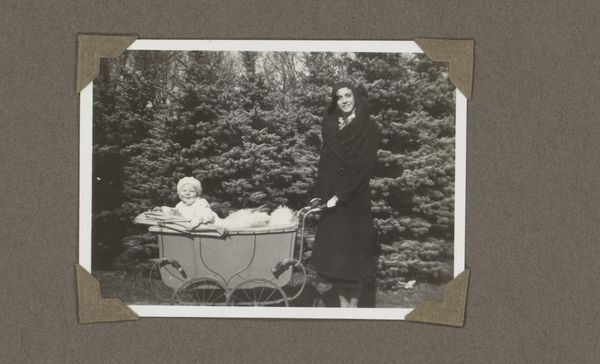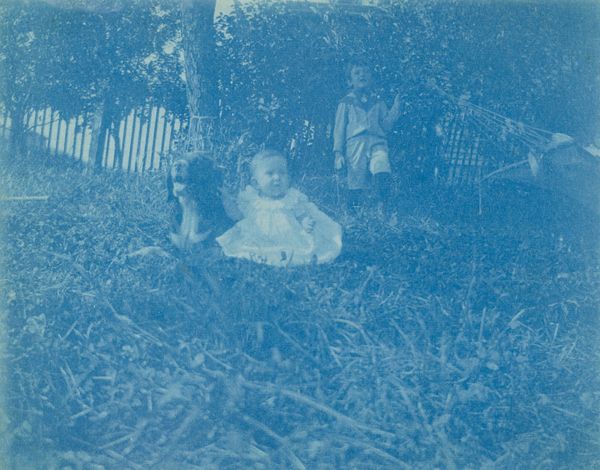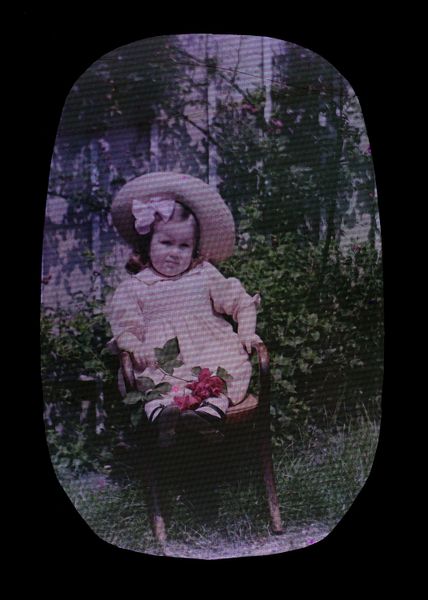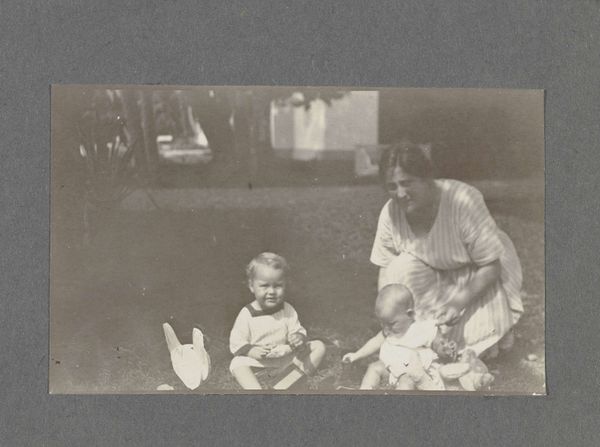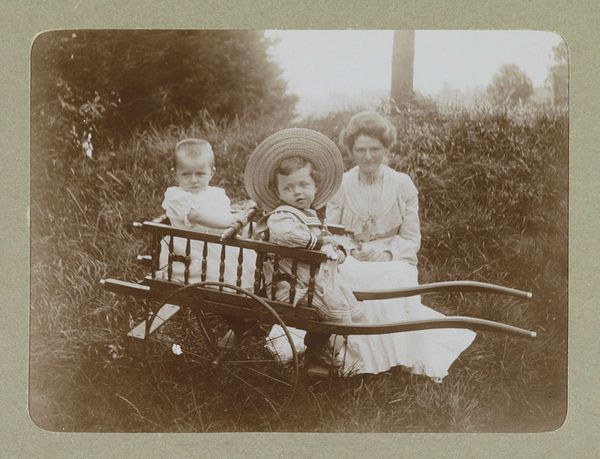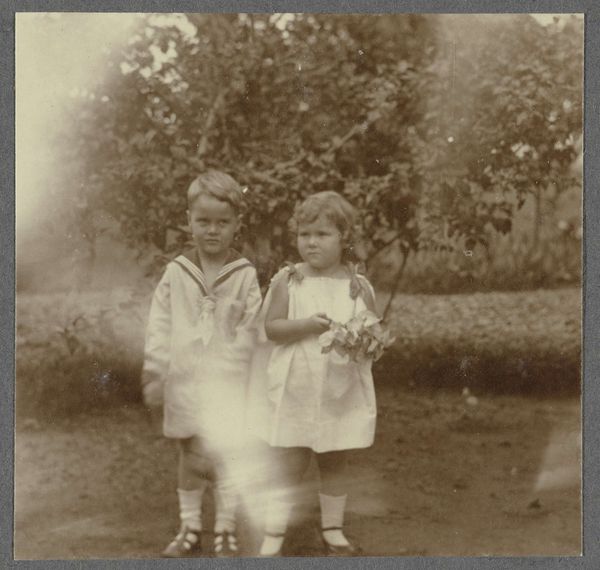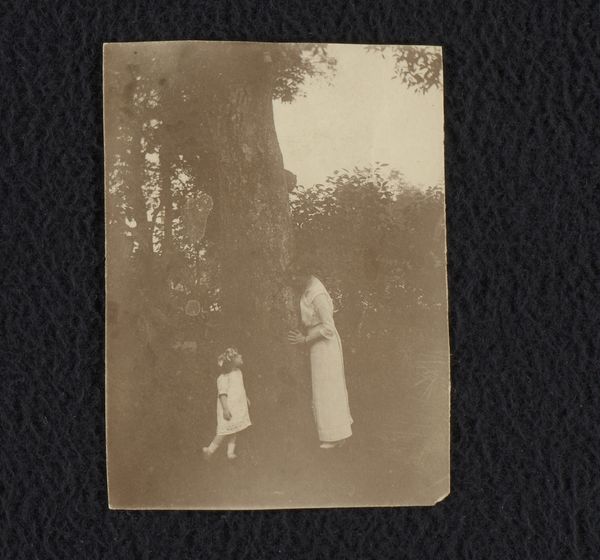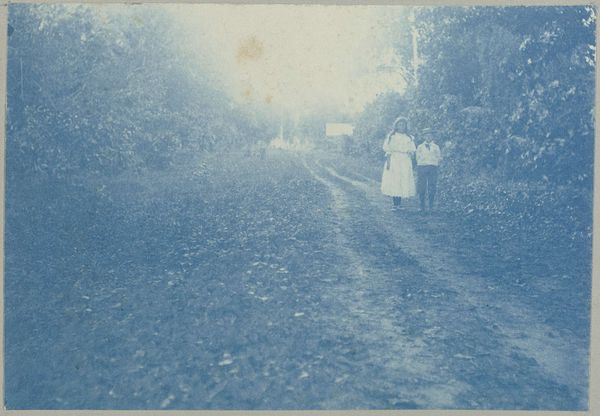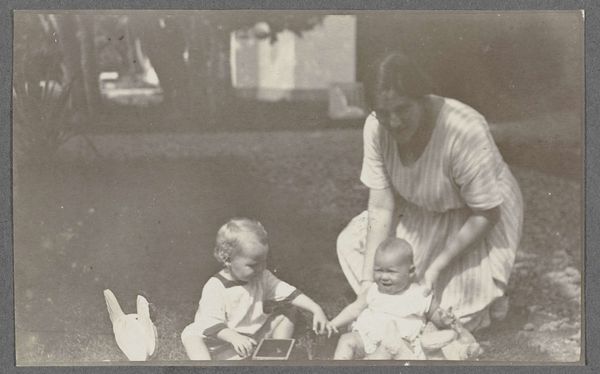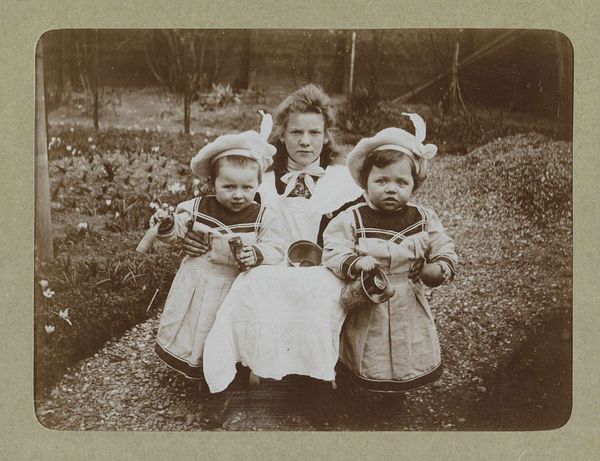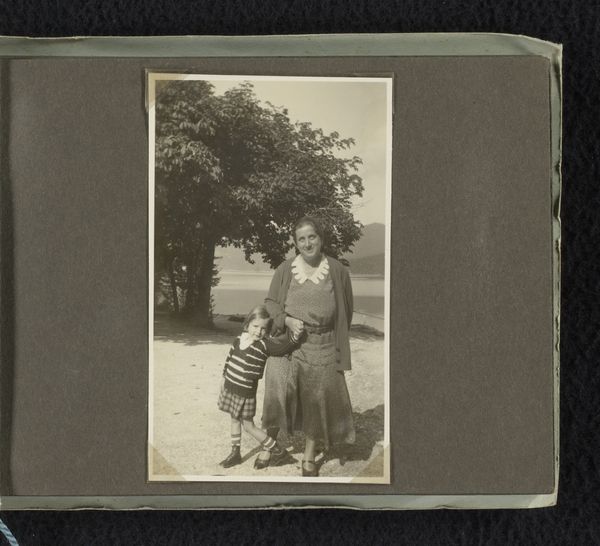
Vrouw (boerin) en kind in Urker streekdracht, zittend in het gras, Rotterdam 1919
0:00
0:00
Dimensions: height 90 mm, width 120 mm
Copyright: Rijks Museum: Open Domain
Curator: This is a fascinating photograph titled “Vrouw (boerin) en kind in Urker streekdracht, zittend in het gras, Rotterdam,” taken in 1919 by Sebastiaan Alphonse Van Besten. It captures a woman and child in traditional Urk clothing, sitting in the grass. Editor: My first impression is one of muted tranquility. The predominantly earthy and green tones create a very serene atmosphere. There's something timeless and melancholic about the piece, wouldn't you say? Curator: Absolutely. Understanding the context, we need to look at the history of Urk, a former island and fishing village, now part of the mainland. The clothing shown is emblematic of a community holding onto its cultural identity during significant social and economic changes in the early 20th century. Photography, in this sense, becomes a powerful tool of cultural preservation. Editor: It certainly begs the question of representation. Who is taking this image, and for what purpose? The woman and child seem posed, yet there's a raw honesty in their expressions. What’s particularly striking for me is how the green hues interact with the cultural context of this depiction. It feels tied to ideas of rural identity, female labour, and childhood experience at the intersection of cultural shifts. Curator: The composition emphasizes their connection to the land. They are part of the landscape, their identities inseparable from it. It reminds me of discussions around regionalism in art, where artists focus on representing the specific character of a place and its people. This photograph documents that. Consider the political landscape then—rapid industrialization threatening traditional ways of life, the image becomes charged with questions of authenticity and progress. Editor: I agree. It also brings to the fore how such photographs contributed to the construction of collective memory and identity. Who gets remembered and how is something we should always analyze. I appreciate how Van Besten seems to highlight the quiet resilience embedded within everyday moments. Curator: This photo reminds us that seemingly simple depictions carry layers of socio-political meaning and continue to offer compelling material for art historical discussion and debate. Editor: Indeed, this photograph’s subdued tones hold complex layers regarding the politics of cultural representation and how individual lives are inextricably linked to wider social transformations.
Comments
No comments
Be the first to comment and join the conversation on the ultimate creative platform.
